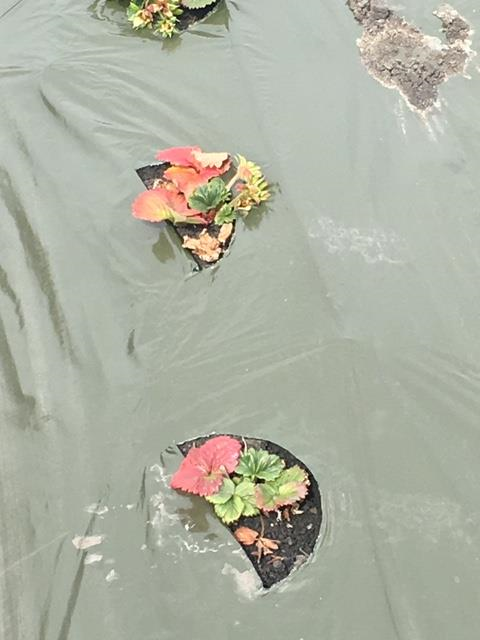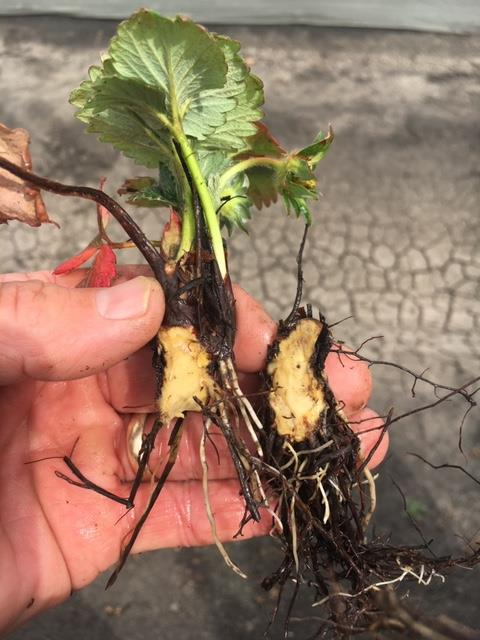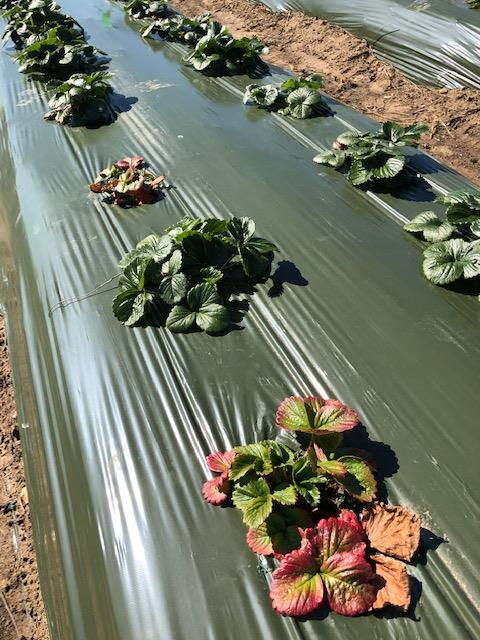
- Author: Mark Bolda
- Author: Michael Cahn
The recent flooding on the Central Coast has really put a lot of local strawberry growers in a bad position. Some fields have been underwater several days to a week or more, which has deprived plants of oxygen and sunlight needed for respiration and growth. As these plants try to recover, they will likely be severely set back for several weeks. Other fields that were briefly flooded are silted over and have completely saturated soils.
Looking beyond our current conditions of just too much water, we need think about what the plan of action is going to be going forward into the spring. Since in many areas strawberry plants have been set back because they were in saturated, anaerobic soil, growers will need to turn their attention to jump starting growth in their fields once the ground dries out, and becomes aerobic again.
It will be important at this time to think about nutrition. It's a fair bet that even fields that received pre-plant fertilizer lost a significant amount of nitrogen from the soil during the flooding and unprecedented rains during the last few months. We could be wrong about this, so the first thing growers and farm managers should do once they are back out in the fields is take a soil sample and check the mineral N levels, especially the concentration of nitrate, which is the form of nitrogen that strawberry readily take up. Nitrate-N will also mineralize from the soil organic matter and any organic amendments that were previously incorporated in the soil as the soil becomes oxygenated again. Soil samples should be collected from 8 to 12 locations in the field from the 0 to 12-inch depth in or near the plant row and composited together. A subsample of the composited soil should be analyzed for mineral forms of nitrogen (nitrate and ammonium). We recommend using the soil nitrate quick test to assess the soil nitrate status of your fields in a timely manner. Please refer to this previous article on the how to accurately measure soil nitrate using the quick test. If you intend to send the soil to a laboratory that can quickly analyze the soil, we suggest shipping the soil sample with blue ice so that it stays cold to prevent mineralization of N in transit. The laboratory should analyze the sample for both ammonium and nitrate, the two mineral forms of nitrogen that are in the soil.
If the soil nitrate values are below 10 ppm nitrate-N then the plants will likely benefit from an addition of N fertilizer. Fertilizers containing nitrate forms of N such as CAN-17, UAN32, or ammonium nitrate would be good to add so that the strawberry plants can immediately take up nitrogen, which should help jump start growth. The urea and ammonium contained in fertilizer will also mineralize to nitrate, but due to the recent anaerobic conditions and cold soil temperatures, this process may be slower than normal.
Since this might be the first time that you've run your irrigation system in a while, it'll be good to check before fertigating to ensure that everything is in good order. Check for broken connections between drip lines and the submains (layflat, oval hose). Check that valves and pipes are still connected and unbroken and that the pump is functioning well. These will be all good items to check before putting this system to work after such a long hiatus.
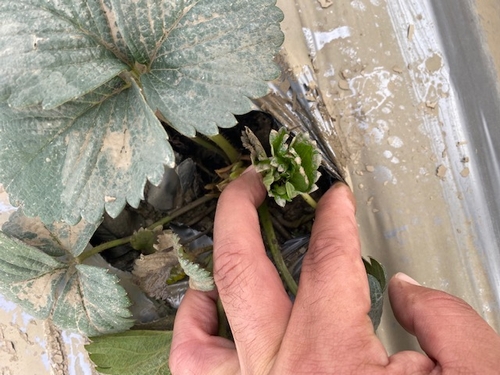
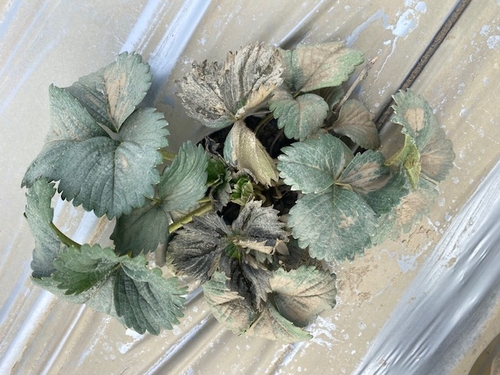
- Author: Mark Bolda
While it's pretty common for Californians to set aside their complaints about rainy weather because we need the water, the flip side for the Central Coast strawberry industry is ruined fruit and plant problems.
I've been seeing a number of fields with the problem of Photo 1 below. Plants are barely growing, the foliage is discolored and the overall aspect is not great.
It's best to take a careful, step by step approach to these problems. Splitting open a crown of one of the plants from the field shown in the first photo shows no discoloration common to many soil diseases (and in this case diagnostic testing confirmed that). The discoloration of the foliage is consistent with a lack of nutrition, but that plants very close to the ones doing poorly are doing great belies the idea that the field as a whole is lacking.
Let's look at the soil of surrounding these plants for a moment. There is a lot of water associated with these areas (close observers of Photo 2 below, and I know there are many since they want to figure out whose field this is, will see that there has been standing water indicated by the cracked soil) engendered by being a bit lower than the other part of the field, or being on the heavier side of soil type. Other areas, which are not as low or not as heavy, not nearly as many sick plants, if any at all.
How then does one explain the lack of growth and more so the mineral deficiencies so evident in the leaves? Easy. An excess of water around the plant roots create a near, if not completely, anaerobic condition and interfere with the processes needed to take up minerals from the surrounding soil which in turn impede growth.
With the above steps completed, I'd feel pretty confident on making the call that this is water related. So much in fact that I'm writing a blog about it.
To be sure, disease is out there as evidenced by the third and last photo. These plants are very similar to the others, although the spotty pattern in the field gives one the sense that it's not excess moisture. Splitting open the crown revealed discoloration, and further testing at the diagnostic laboratory confirmed Fusarium.
